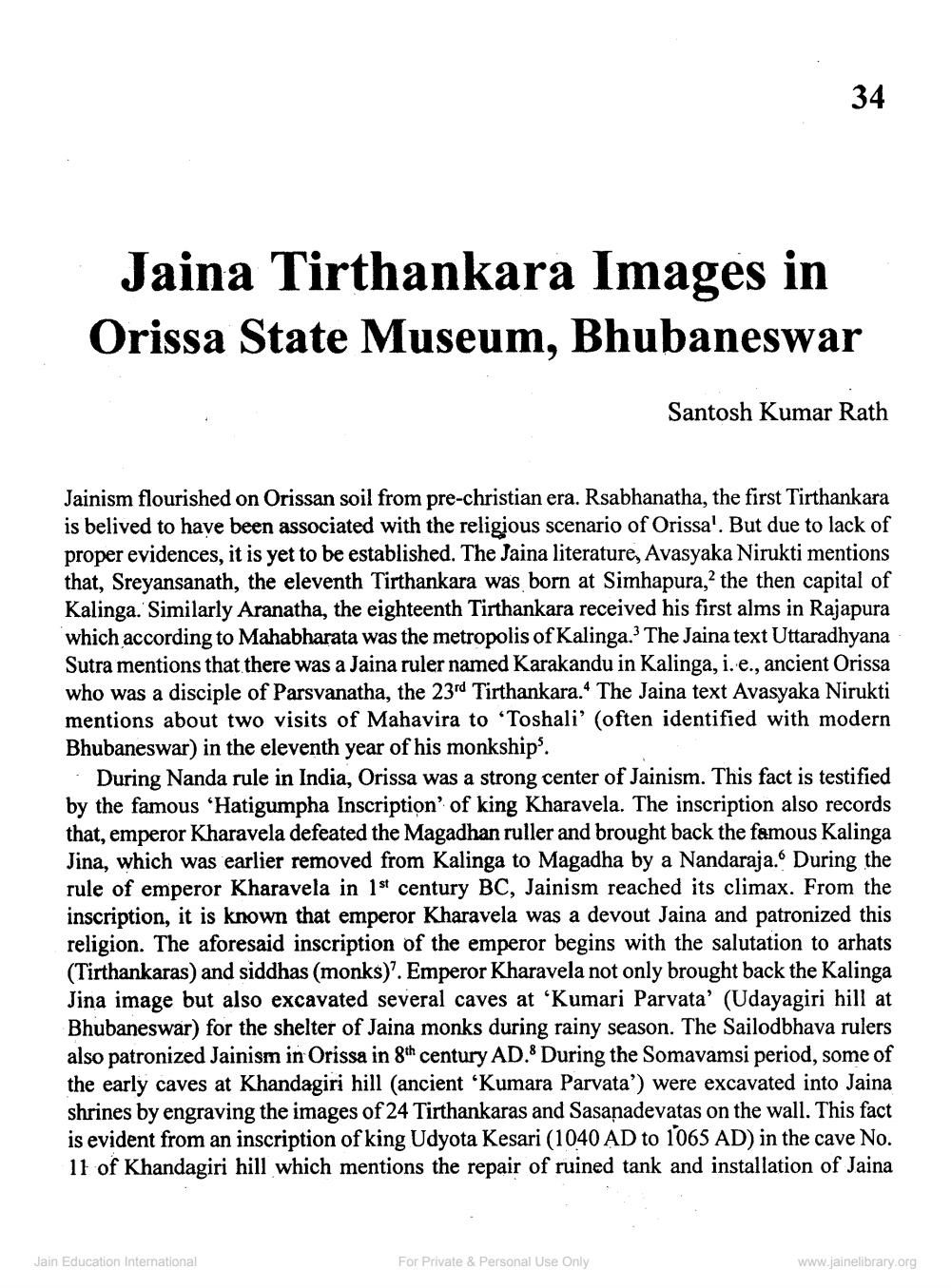________________
Jaina Tirthankara Images in Orissa State Museum, Bhubaneswar
34
Jainism flourished on Orissan soil from pre-christian era. Rsabhanatha, the first Tirthankara is belived to have been associated with the religious scenario of Orissa'. But due to lack of proper evidences, it is yet to be established. The Jaina literature, Avasyaka Nirukti mentions that, Sreyansanath, the eleventh Tirthankara was born at Simhapura,2 the then capital of Kalinga. Similarly Aranatha, the eighteenth Tirthankara received his first alms in Rajapura which according to Mahabharata was the metropolis of Kalinga.3 The Jaina text Uttaradhyana Sutra mentions that there was a Jaina ruler named Karakandu in Kalinga, i. e., ancient Orissa who was a disciple of Parsvanatha, the 23rd Tirthankara. The Jaina text Avasyaka Nirukti mentions about two visits of Mahavira to 'Toshali' (often identified with modern Bhubaneswar) in the eleventh year of his monkship3.
Jain Education International
Santosh Kumar Rath
During Nanda rule in India, Orissa was a strong center of Jainism. This fact is testified by the famous 'Hatigumpha Inscription' of king Kharavela. The inscription also records that, emperor Kharavela defeated the Magadhan ruller and brought back the famous Kalinga Jina, which was earlier removed from Kalinga to Magadha by a Nandaraja. During the rule of emperor Kharavela in 1st century BC, Jainism reached its climax. From the inscription, it is known that emperor Kharavela was a devout Jaina and patronized this religion. The aforesaid inscription of the emperor begins with the salutation to arhats (Tirthankaras) and siddhas (monks)'. Emperor Kharavela not only brought back the Kalinga Jina image but also excavated several caves at 'Kumari Parvata' (Udayagiri hill at Bhubaneswar) for the shelter of Jaina monks during rainy season. The Sailodbhava rulers also patronized Jainism in Orissa in 8th century AD. During the Somavamsi period, some of the early caves at Khandagiri hill (ancient 'Kumara Parvata') were excavated into Jaina shrines by engraving the images of 24 Tirthankaras and Sasanadevatas on the wall. This fact is evident from an inscription of king Udyota Kesari (1040 AD to 1065 AD) in the cave No. 11 of Khandagiri hill which mentions the repair of ruined tank and installation of Jaina
For Private & Personal Use Only
www.jainelibrary.org




